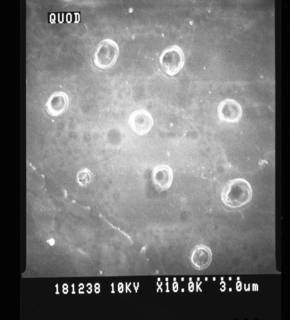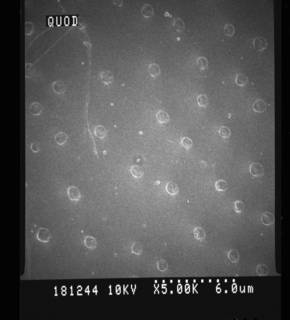HABs taxon details
Ostreopsis mascarenensis Quod, 1994
233711 (urn:lsid:marinespecies.org:taxname:233711)
accepted
Species
marine, fresh, terrestrial
Quod J.P. 1994. Ostreopsis mascarenensis sp. nov. (Dinophyceae), a new toxic dinoflagellate from coral reefs in the South West Indian Ocean. Crypt., Algol. 15: 243-252. [details]
Type locality contained in Mascareignes Archipelago
type locality contained in Mascareignes Archipelago [details]
Harmful effect Toxic strains known from the Mascareignes Archipelago, SW Indian Ocean (Lenoir et al. 2004 above)
Harmful effect Produces palytoxin analogues (polyethers). Two compounds isolated, known as mascarenotoxin-A and -B isolated. Toxic to...
Harmful effect Toxic strains known from the Mascareignes Archipelago, SW Indian Ocean (Lenoir et al. 2004 above) [details]
Harmful effect Produces palytoxin analogues (polyethers). Two compounds isolated, known as mascarenotoxin-A and -B isolated. Toxic to...
Harmful effect Produces palytoxin analogues (polyethers). Two compounds isolated, known as mascarenotoxin-A and -B isolated. Toxic to mice. Possibly responsible for palytoxin poisoning, which in humans results in cramps, nausea, diarrhoea, etc, after eating of crabs and certain fish, see Lenoir et al. (2004). [details]
Guiry, M.D. & Guiry, G.M. (2024). AlgaeBase. World-wide electronic publication, National University of Ireland, Galway (taxonomic information republished from AlgaeBase with permission of M.D. Guiry). Ostreopsis mascarenensis Quod, 1994. Accessed through: Lundholm, N.; Churro, C.; Escalera, L.; Fraga, S.; Hoppenrath, M.; Iwataki, M.; Larsen, J.; Mertens, K.; Moestrup, Ø.; Murray, S.; Tillmann, U.; Zingone, A. (Eds) (2009 onwards) IOC-UNESCO Taxonomic Reference List of Harmful Micro Algae at: https://www.marinespecies.org/hab/aphia.php?p=taxdetails&id=233711 on 2024-09-25
Lundholm, N.; Churro, C.; Escalera, L.; Fraga, S.; Hoppenrath, M.; Iwataki, M.; Larsen, J.; Mertens, K.; Moestrup, Ø.; Murray, S.; Tillmann, U.; Zingone, A. (Eds) (2009 onwards). IOC-UNESCO Taxonomic Reference List of Harmful Micro Algae. Ostreopsis mascarenensis Quod, 1994. Accessed at: https://www.marinespecies.org/hab/aphia.php?p=taxdetails&id=233711 on 2024-09-25
Date
action
by
2006-07-28 07:22:01Z
created
Camba Reu, Cibran
original description
Quod J.P. 1994. Ostreopsis mascarenensis sp. nov. (Dinophyceae), a new toxic dinoflagellate from coral reefs in the South West Indian Ocean. Crypt., Algol. 15: 243-252. [details]
basis of record Guiry, M.D. & Guiry, G.M. (2024). AlgaeBase. <em>World-wide electronic publication, National University of Ireland, Galway.</em> searched on YYYY-MM-DD., available online at http://www.algaebase.org [details]
basis of record Gómez, F. (2005). A list of free-living dinoflagellate species in the world's oceans. <em>Acta Bot. Croat.</em> 64(1): 129-212. [details]
additional source Guiry, M.D. & Guiry, G.M. (2024). AlgaeBase. <em>World-wide electronic publication, National University of Ireland, Galway.</em> searched on YYYY-MM-DD., available online at http://www.algaebase.org [details]
additional source Moestrup, Ø., Akselman, R., Cronberg, G., Elbraechter, M., Fraga, S., Halim, Y., Hansen, G., Hoppenrath, M., Larsen, J., Lundholm, N., Nguyen, L. N., Zingone, A. (Eds) (2009 onwards). IOC-UNESCO Taxonomic Reference List of Harmful Micro Algae., available online at http://www.marinespecies.org/HAB [details]
toxicology source Lenoir S., Ten-Hage L., Turquet J., Quod J.-P., Bernard C. & Hennion M.-C. 2004. First evidence of palytoxin analogues from an <i>Ostreopsis mascarenensis</i> (Dinophyceae) benthic bloom in Southwestern Indian Ocean. J. Phycol. 40: 1042-1051. [details]
ecology source Hansen, P. J.; Tillmann, U. (2020). Mixotrophy in Dinoflagellates: Prey Selection, Physiology and Ecological Importance in Dinoflagellates: Classification, Evolution, Physiology and Ecological Significance. <em>Ed: Subba Rao Durvasula. Publisher: Nova Science Publishers, Inc. New York, USA.</em> [details]
ecology source Mitra, A.; Caron, D. A.; Faure, E.; Flynn, K. J.; Leles, S. G.; Hansen, P. J.; McManus, G. B.; Not, F.; Do Rosario Gomes, H.; Santoferrara, L. F.; Stoecker, D. K.; Tillmann, U. (2023). The Mixoplankton Database (MDB): Diversity of photo‐phago‐trophic plankton in form, function, and distribution across the global ocean. <em>Journal of Eukaryotic Microbiology.</em> 70(4)., available online at https://doi.org/10.1111/jeu.12972 [details]
ecology source Faust, M. A.; Morton, S. L.; Q, J. P. (1996). Further SEM studies of marine dinoflagellates: the genus Ostreopsis (Dinophyceae). <em>J. Phycol.</em> 32: 1053-1065. [details]
basis of record Guiry, M.D. & Guiry, G.M. (2024). AlgaeBase. <em>World-wide electronic publication, National University of Ireland, Galway.</em> searched on YYYY-MM-DD., available online at http://www.algaebase.org [details]
basis of record Gómez, F. (2005). A list of free-living dinoflagellate species in the world's oceans. <em>Acta Bot. Croat.</em> 64(1): 129-212. [details]
additional source Guiry, M.D. & Guiry, G.M. (2024). AlgaeBase. <em>World-wide electronic publication, National University of Ireland, Galway.</em> searched on YYYY-MM-DD., available online at http://www.algaebase.org [details]
additional source Moestrup, Ø., Akselman, R., Cronberg, G., Elbraechter, M., Fraga, S., Halim, Y., Hansen, G., Hoppenrath, M., Larsen, J., Lundholm, N., Nguyen, L. N., Zingone, A. (Eds) (2009 onwards). IOC-UNESCO Taxonomic Reference List of Harmful Micro Algae., available online at http://www.marinespecies.org/HAB [details]
toxicology source Lenoir S., Ten-Hage L., Turquet J., Quod J.-P., Bernard C. & Hennion M.-C. 2004. First evidence of palytoxin analogues from an <i>Ostreopsis mascarenensis</i> (Dinophyceae) benthic bloom in Southwestern Indian Ocean. J. Phycol. 40: 1042-1051. [details]
ecology source Hansen, P. J.; Tillmann, U. (2020). Mixotrophy in Dinoflagellates: Prey Selection, Physiology and Ecological Importance in Dinoflagellates: Classification, Evolution, Physiology and Ecological Significance. <em>Ed: Subba Rao Durvasula. Publisher: Nova Science Publishers, Inc. New York, USA.</em> [details]
ecology source Mitra, A.; Caron, D. A.; Faure, E.; Flynn, K. J.; Leles, S. G.; Hansen, P. J.; McManus, G. B.; Not, F.; Do Rosario Gomes, H.; Santoferrara, L. F.; Stoecker, D. K.; Tillmann, U. (2023). The Mixoplankton Database (MDB): Diversity of photo‐phago‐trophic plankton in form, function, and distribution across the global ocean. <em>Journal of Eukaryotic Microbiology.</em> 70(4)., available online at https://doi.org/10.1111/jeu.12972 [details]
ecology source Faust, M. A.; Morton, S. L.; Q, J. P. (1996). Further SEM studies of marine dinoflagellates: the genus Ostreopsis (Dinophyceae). <em>J. Phycol.</em> 32: 1053-1065. [details]
 Present
Present  Inaccurate
Inaccurate  Introduced: alien
Introduced: alien  Containing type locality
Containing type locality
From regional or thematic species database
Description Very large cells, broadly oval in shape, markedly flattened. Epitheca slightly convex in contrast to the hypotheca which is more flat. Apical pore plate Po long (27 μm) and slightly curved. Plate 2’’’’ hexagonal, large and elongated with a L/W ratio of 2.55. The thecal surface is smooth and covered by numerous shallow round depressions (1–1.2 μm in diameter) containing one or several thecal pores (0.2–0.4 μm in diameter) in their centre. The statement by Faust et al. (1996) indicating that the pores are round, containing two small openings with a smooth edge and a diameter of 0.60 μm probably refer to the depressions. [details]
Harmful effect Toxic strains known from the Mascareignes Archipelago, SW Indian Ocean (Lenoir et al. 2004 above) [details]
Harmful effect Produces palytoxin analogues (polyethers). Two compounds isolated, known as mascarenotoxin-A and -B isolated. Toxic to mice. Possibly responsible for palytoxin poisoning, which in humans results in cramps, nausea, diarrhoea, etc, after eating of crabs and certain fish, see Lenoir et al. (2004). [details]



